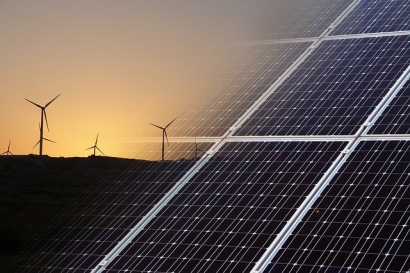
For example, out of solar capacity additions, 40GW target was exclusively set for distributed solar rooftops. It is estimated that only 30 to 40% of that target will be met. A recent project under India’s Smart Cities Mission (the author was “energy and green building expert”) assessed grid connected renewable energy generation and consumption for cities under the mission. The results of assessment of 45 cities show that the renewable energy capacities (MW) contribute only 0.5% of connected load (MW). Moreover 1.38% of electrical energy consumption (KWH) in cities is met by renewable energy sources currently.
This calls for progressive renewable energy policies in Indian cities including better building designs and materials to suit lower effective roof area due to higher population densities in Indian cities. The best performing cities have a mix of intra (within cities) and inter (outside cities) generation from renewable energy sources through regulatory incentives.
This was largely achieved through attractive feed-in-tariffs, net-metering arrangements and, wheeling and banking incentives to transmit renewable power from outside city limits. Due to a large part of the solar photovoltaic value chain, such as poly-silicon, ingot and wafer manufacturing, happens outside India, customer doubts on technology, quality and serviceability in case of fault or poor performance needs to be well addressed.
Moreover, the entry of private utility companies into the local renewable energy market requires regulatory provisions to preserve competition and monitor fairness of electricity prices for distributed generation to be successful.
In addition, there is a dearth of insufficient interconnection rules and technical feasibility for grid operations for any large-scale distribution generation scenarios for managing variability of renewable energy in cities. In some cases, policies add up energy storage costs for arriving at a final price, which then becomes substantially high. Also, renewable energy prices affected by a global fall in photovoltaic module prices create doubts in the minds of customers.
By overcoming these challenges through appropriate policies, Indian cities can substantially attract domestic and foreign investments for renewable energy. For example, if the cities under study target 10% electrical demand to be met through renewable energy, a conservative estimate of $2 to $3 bn investment, corresponding to about 5 to 6 GW of power generation capacity alone will be required. In essence, India’s renewable energy ambition needs a “renewed” strategy.
The author, Hari Krishnan Govindarajan is an energy consultant and practitioner based out of India. He has served 15+ years in the energy and automotive industry including working with Governments, multilateral agencies and private sector. He is active in transmission and distribution (T&D), smart grids including electric vehicles, renewable energy and energy/power trading. He can be reached at krishmec@gmail.com.

